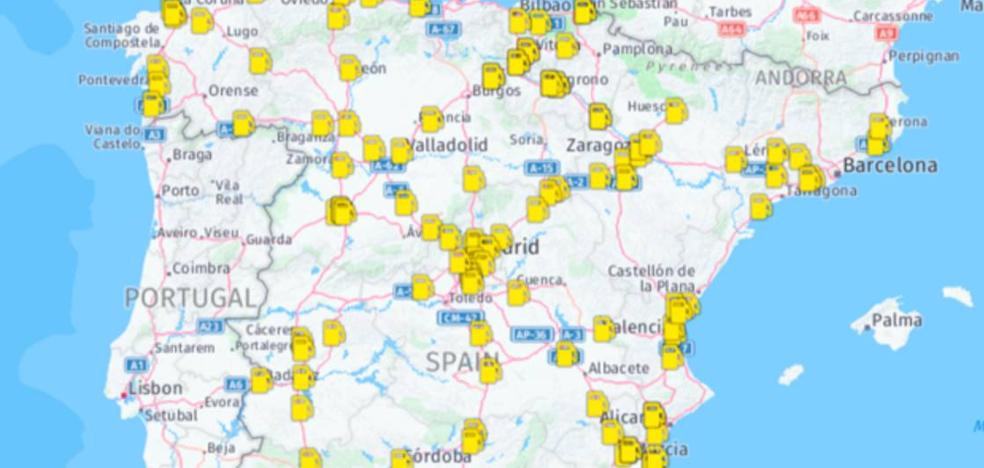Autonomy and the existence of public charging points are two of the elements of greatest concern to EV owners and potential buyers. Spain remains at the bottom of the number of chargers, so charging at home is the most feasible and economical alternative for now.
The design of
a charging station for electric vehicles it must be prepared for the conditions of any environment in which it is installed. If it is located outside, it must provide protection against bad weather, from rain and snow as well as from dust, sun and cold or hot temperatures.
The structure must protect the internal circuits and ensure operation in any context. The same goes for an indoor location, such as a covered parking lot, where humid conditions or fraught environments occur.
“Select
a solution made with high quality materials, such as aluminum, and with security seals is essential to ensure durability. This is the only way the user can be sure of a charging station with a longer service life,” says Henrik Bergman, regional director of Charge Amps in Spain and Portugal. “Having a charging point in the parking lot at home or at work, where our vehicle spends more hours , inspires confidence and encourages buyers to choose electromobility,” he says.
If we talk about charging the electric car
there are some concepts regarding the types of chargers, the connectors or the loading times, which can be confusing, but it’s much easier than it looks once you get familiar with using it. For this, Ramon Calderón, a Seat expert, explains in detail how to charge the future.
“Battery charging of electric and hybrid vehicles mainly depends on two factors: the capacity of the car battery and the available charging power, and this influences the charging time ranges,” explains the person responsible for e-Mobility. at Seat.
battery capacity is the amount of electrical energy it can store while power is the amount of electrical energy the charger can supply to the vehicle. «The user of an electrified car has different charging modes at his disposal: type 2 (slow charging), type 3 (semi-fast charging) and type 4 (super fast or ultra fast charging). Depending on the capacity of our car battery and the power of the charger and connection cable, it will take more or less time to charge,” explains Calderón.
If we have a plug-in hybrid car or a small electric car at home, we can charge the car overnight in the garage with a charge type 2 or slow charge. With this option, the vehicle is connected to the electricity grid by means of an adapter that guarantees the safety of charging and is equipped with a household plug, as we have at home (Schuko type). In this mode (for a power of 3.6 kW), a hybrid takes on average between 3 and 4 hours to charge the battery from 0 to 100%, and an electric about 16 hours on average, depending on the power and the cable and battery capacity.
However, if we have a 100% electric vehicle or a plug-in hybrid, with a fairly high autonomy, the most convenient option is the type 3 charging mode, also called semi-fast. This charging mode requires a wall charger or point,
popularly known as Wallboxwhich contains various protection systems necessary for the safety of the electrical installation and the vehicle.
“The use of mode 3, due to its safety, reliability and speed, prevails over mode 2 as the charging power and capacity of electric vehicle batteries increase,” says Calderón. This mode allows us to work at higher powers at home and in turn optimize the charging time. A hybrid like the CUPRA Formentor can be charged in less than 3 hours and 100% electric in less than 10 hours on average.
Determining the type of use that will be given to the charging station, the drivers who will be using it, the space it will be in or the climate it will face is key when choosing a device. Likewise, safety factors that protect the electrical installation or prevent misuse of the charger must be taken into account. From Charge Amps, they share some factors that should be assessed before installing a charge point at home or work.
Having the ability to connect the charging station to the internet is a guarantee for the future as it adapts the device to the new IoT and smart home trends. The fact that the charger can be accessed and controlled remotely at all times guarantees that the vehicle will always be available, as the charges can be programmed or activated in the event of an unforeseen event.
In addition,
the status of the charger is checked detecting potential problems and unwanted use by third parties is avoided, as the charging station is not activated until the command is given, an action that can be performed locally or remotely from any location.
Having a charging point ready to use surplus solar energy provides a present and future benefit, in addition to a guaranteed higher return on investment. “It’s normal for drivers to focus their most direct investment on installing a charging station, but choosing a model that’s willing to use the solar surplus is a winning bet. By being able to charge the car with clean energy, we have an even greater impact on the planet,” says Henrik Bergman of Charge Amps.
Once away from home, the public use charging points that we will usually find will also be mode 3 or semi-fast as it is mandatory that they are at least of this charge level. In mode 3, the connection of the electric or hybrid vehicle to the AC grid is performed
using Mennekes connectors. Taking into account that the capacity of these public points is higher (around 11 kW), the charging time for a plug-in hybrid will average between 30 minutes and 1 hour, while for 100% electric charging from 0 to 100% can take us between 4 and 6 hours.
mode 4 or super fast, indicated only for 100% electric vehicles with high autonomy, such as the CUPRA Born, allows us to charge at least 70% of the battery in just over 30 minutes (for a charging power of 100 kW), just enough time to take something or make the weekly purchase, and 100%, about an hour. Charging in mode 4 is done in direct current, unlike the previous modes, which are done in alternating current, which allows for faster charging as the vehicle does not need to make any conversions.
The most commonly used standard connection for this way of charging is the CCS. “These are chargers that, due to their high price and cost of installation, are not designed nor recommended for domestic use and, along with mode 3, are the ones that the user will find in shopping malls, public roads or workplaces,” explains Ramon Calderon out.
Indoor mode 4 chargers there are also ultra-fast charging stations, specially designed for public outdoor use stations or charging stations, where we can charge the vehicle during long journeys or situations where we have very little time. This mode, which can have more than 250 kW of power, will charge an average 100% electric car in less than 30 minutes.
It is important to note that the charger and the vehicle communicate with each other continuously during charging so as not to exceed the allowable capacity of the battery. That is, a vehicle that allows up to 125 kW of power, even if charged in a 250 kW charger, will never exceed 125 kW. The same applies in reverse; Although the vehicle can be charged at 250 kW, it will never be higher if the charger is of lower power.
Source: La Verdad
I am Mary Fitzgerald, a professional journalist and author of the Today Times Live. My specialty is in writing and reporting on technology-related topics. I have spent the last seven years extensively researching and understanding the field of technology so I can properly inform my readers about developments in this ever-evolving world.



